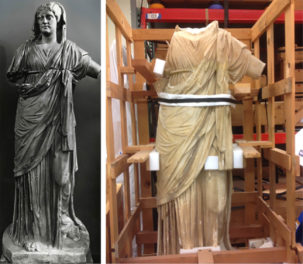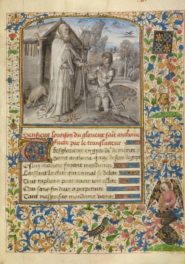
Untitled #15 from Mini-Malls, Catherine Opie, 1997. © Catherine Opie
For six months, I lived up the hill from Sunset and Coronado in Silverlake. I’d go to Mariela’s for burritos—always a little too watery, always with salsa not quite spicy enough, but cheap, and the size of a brick. It was easier to walk to Mariela’s than to park there, because like many mini-malls, the parking was cramped, and forced pulling out awkwardly into busy traffic.
None of that shows up in Catherine Opie’s photograph of that corner on exhibit at the Getty through June 6.
Instead of seeing a busy street scene—this is how it looks in Google’s street view—I saw, through Catherine Opie’s lens, a depopulated expanse, turned from cluttered everydayness into something sublime.
Opie photographs Los Angeles mini-malls with large-format, 7-inch-by-17-inch film, creating broad, detailed black and white prints. “In many ways, the source of inspiration is the natural American landscape of the 19th century,” says Virginia Heckert, associate curator in the Department of Photographs. Early landscape photographers like Carleton E. Watkins and William Henry Jackson used large-format and panoramic cameras to capture the sweep and grandeur of the American West. Opie invigorates the tradition by focusing on city landscapes, in the photos currently showing in Urban Panoramas: Opie, Liao, Kim at the Getty Center and in her other work.
“She’s chosen to photograph at dawn, when no people are around,” Heckert says. “By photographing those mini-malls devoid of people and cars and all of the accompanying sounds, she draws our eye to what we ordinarily overlook.”
When I leave the Getty today, I’ll drive by dozens of mini-malls, including that one at Sunset and Coronado. And try as I might, it’ll be hard to see them with Opie’s eyes—I get too distracted by burritos.




Love this photo! I love looking at old photos of major cities. I’m not too familiar with the area. Do you have the rough location in Google maps of where this photo was taken? I would love to see what malls and buildings are nearby now.